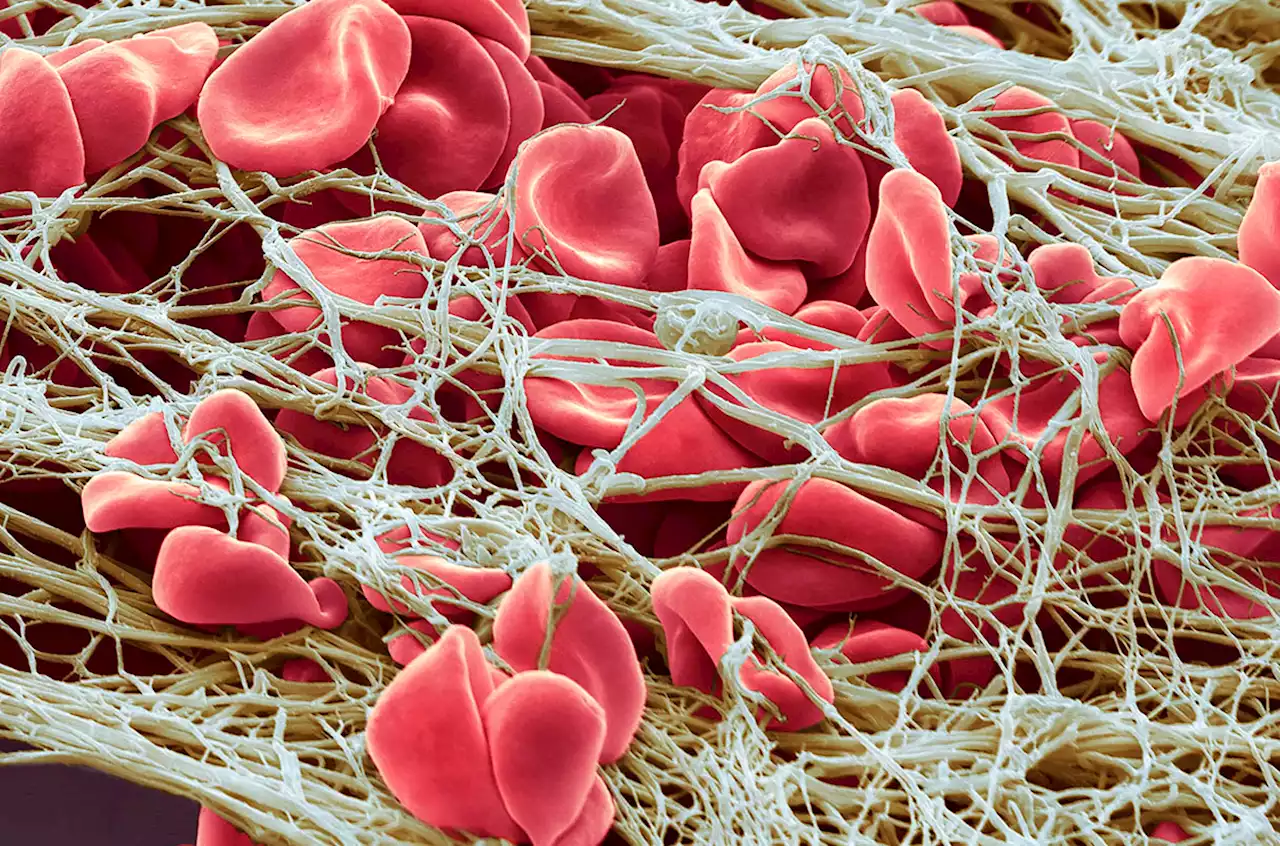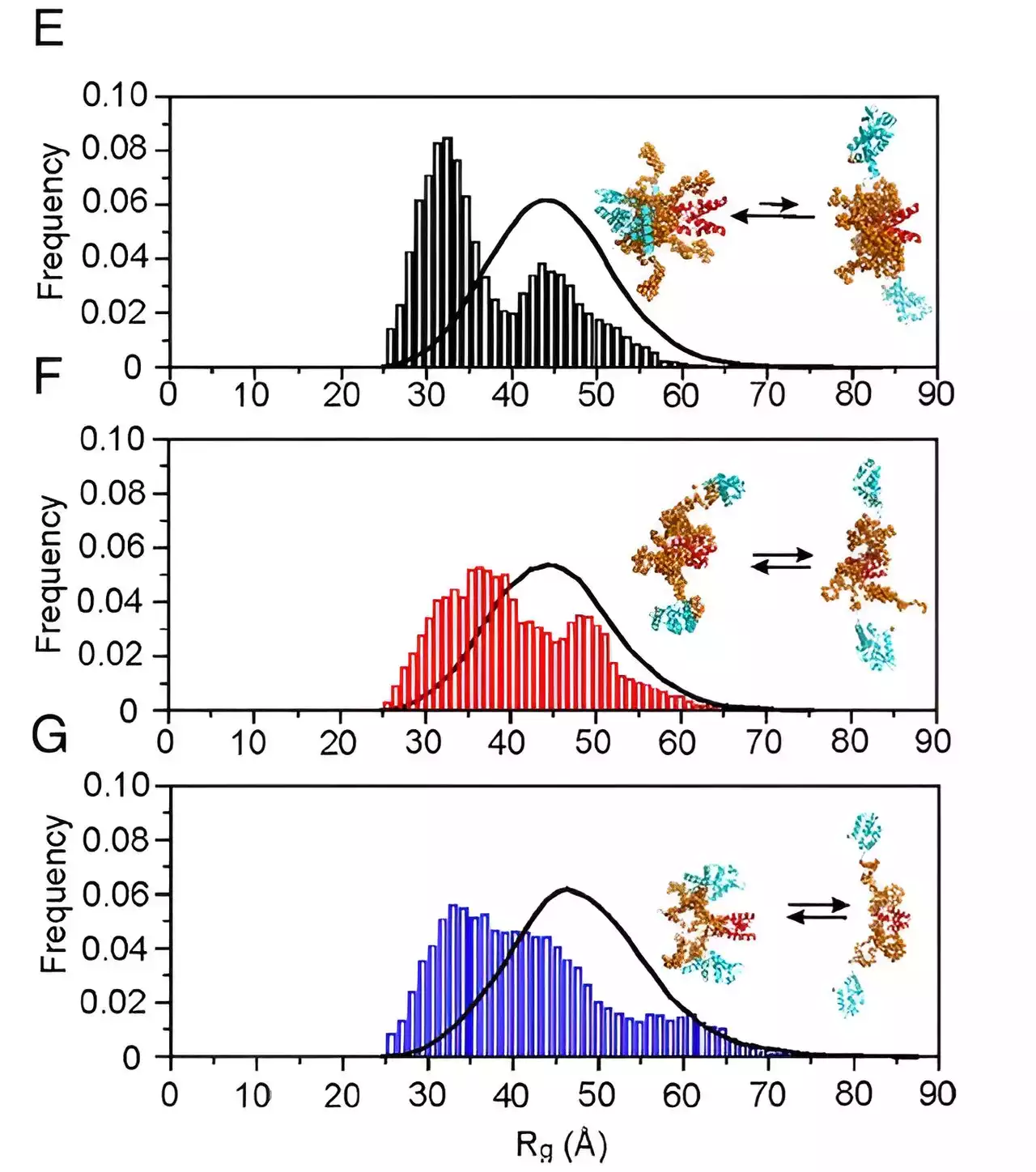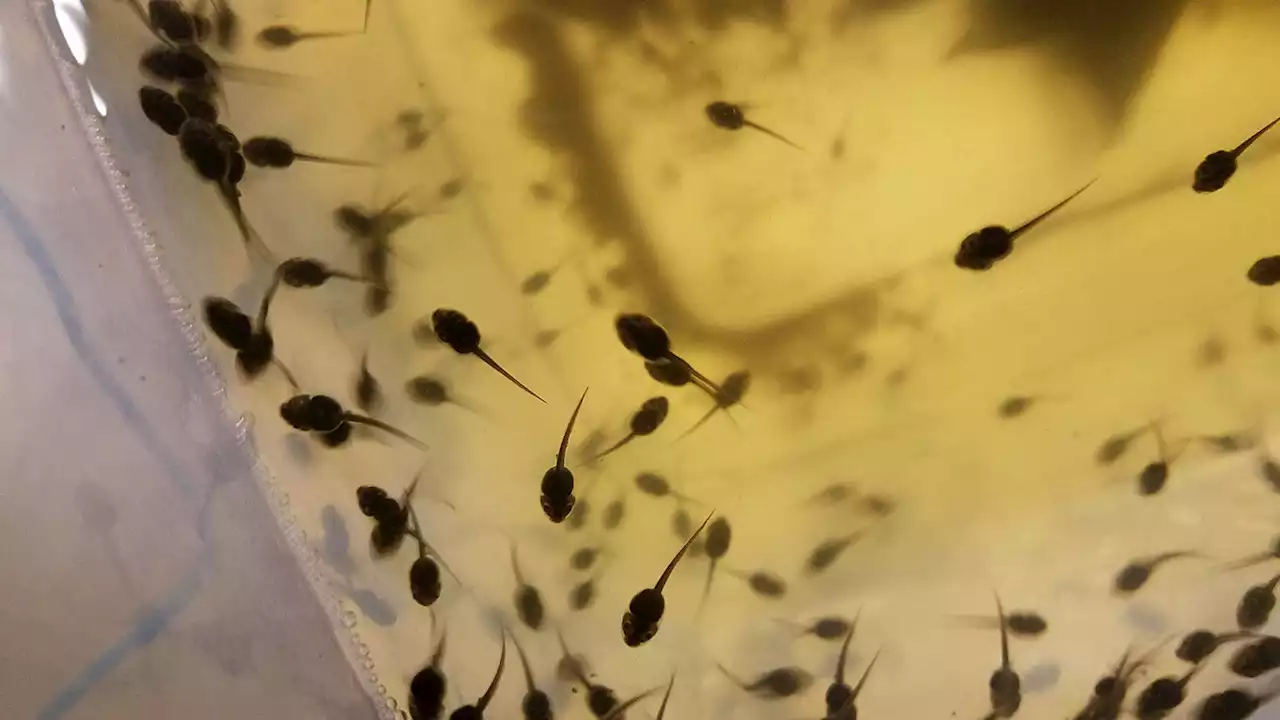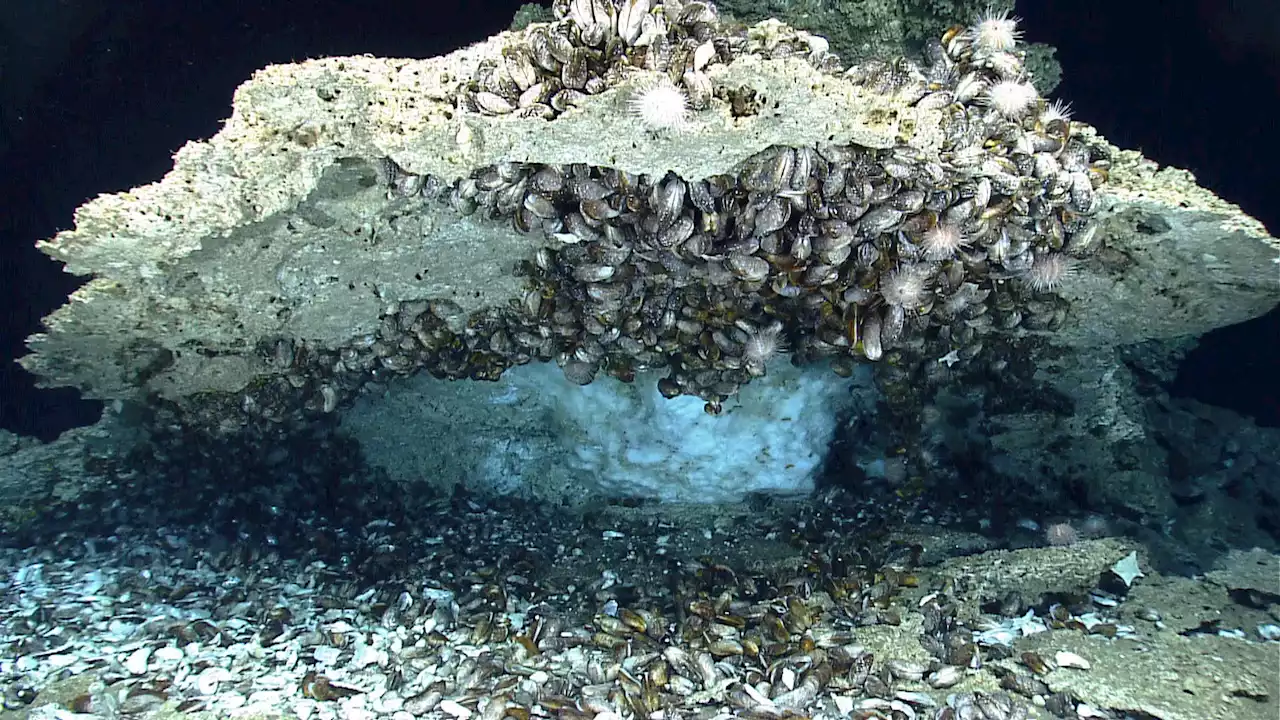Gigatons of greenhouse gas are trapped under the seafloor, and that’s a good thing. Along continental coasts, where slopes descend into the ocean, tiny ice cages hold methane gas in place, preventing it from rising and releasing into the atmosphere. Though not often highlighted in media, these fo
Methane clathrate under a rock from the seafloor of the northern Gulf of Mexico. Deposits such as these demonstrate that methane and other gases cross the seafloor and enter the ocean. Credit: NOAA
But until now, the biological process behind how methane gas remains stable under the sea has been almost completely unknown. In a breakthrough study, a cross-disciplinary team of Georgia Tech researchers discovered a previously unknown class of bacterial proteins that play a crucial role in the formation and stability of methane clathrates.
Glass hypothesized that the sediment would contain proteins that influence the growth of methane clathrate and that those proteins would resemble well-known antifreeze proteins in fish, which help them survive in cold environments. sequencing paired with bioinformatics to identify the genes of the proteins contained in the sediment. Dustin Huard, a researcher in Lieberman’s lab and first author of the paper, then prepared candidate proteins that could potentially bind to the methane clathrates. Huard used X-ray crystallography to determine the structure of the proteins.Huard passed off the protein candidates to Abigail Johnson, a former Ph.D.
Once the team validated that the proteins affect the formation and stability of methane clathrates, they used Huard’s protein crystal structure to carry out molecular dynamics simulations with the help of James Gumbart, professor in the School of Physics. The simulations allowed the team to identify the specific site where the protein binds to the methane clathrate.The study unveiled unexpected insights into the structure and function of the proteins.
Preventing clathrate formation in natural gas pipelines is a billion-dollar industry. If these biodegradable proteins could be used to prevent disastrous natural gas leaks, it would greatly reduce the risk of environmental damage.
United States Latest News, United States Headlines
Similar News:You can also read news stories similar to this one that we have collected from other news sources.
 Clotting proteins linked to Long Covid’s brain fogStudy of unvaccinated people hospitalized with COVID-19 bolsters theory that blood clots may contribute to cognitive problems months later
Clotting proteins linked to Long Covid’s brain fogStudy of unvaccinated people hospitalized with COVID-19 bolsters theory that blood clots may contribute to cognitive problems months later
Read more »
 How disordered proteins contribute to the properties of the rabies virusA large team of international researchers have used techniques at ANSTO's Australian Synchrotron to understand how key proteins contribute to the virulence of the rabies virus, sometimes called the 'zombie virus.'
How disordered proteins contribute to the properties of the rabies virusA large team of international researchers have used techniques at ANSTO's Australian Synchrotron to understand how key proteins contribute to the virulence of the rabies virus, sometimes called the 'zombie virus.'
Read more »
 The right bacterial mix could help frogs take the heatWood frog tadpoles that receive a transplant of green frog bacteria can swim in warm waters, revealing another role for microbiomes: heat tolerance.
The right bacterial mix could help frogs take the heatWood frog tadpoles that receive a transplant of green frog bacteria can swim in warm waters, revealing another role for microbiomes: heat tolerance.
Read more »
 Marvel's Mutant-Hunting Sentinels Have a Novel New UseThe Sentinels have a new purpose.
Marvel's Mutant-Hunting Sentinels Have a Novel New UseThe Sentinels have a new purpose.
Read more »
 Eliza Clark on Book Twitter, True Crime Junkies, and Her Chilling Sophomore Novel'The internet just lends itself to dehumanization in a lot of ways,' says the author Eliza Clark, whose second novel, 'Penance,' is a grisly send up of true crime fanatics.
Eliza Clark on Book Twitter, True Crime Junkies, and Her Chilling Sophomore Novel'The internet just lends itself to dehumanization in a lot of ways,' says the author Eliza Clark, whose second novel, 'Penance,' is a grisly send up of true crime fanatics.
Read more »
 Lamb's Players planning fresh and ghostly take on Charlotte Brontë's novel 'Jane Eyre''Jane (A Ghost Story)' was written by David McFadzean, whose 'Servant of Two Masters' was presented at the Coronado theater in 2011.
Lamb's Players planning fresh and ghostly take on Charlotte Brontë's novel 'Jane Eyre''Jane (A Ghost Story)' was written by David McFadzean, whose 'Servant of Two Masters' was presented at the Coronado theater in 2011.
Read more »
